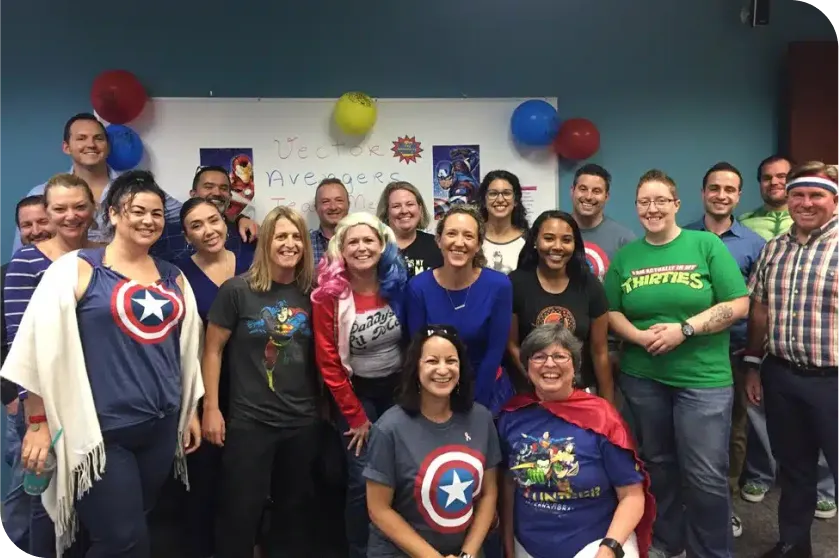November 15, 2023 min read

Five Tips for Managing Risk on College Campuses
Industry:
Solution:

The Occupational Safety and Health Administration (OSHA) sets regulations for workplaces to help ensure safe and healthy working conditions. These regulations apply to college campuses as well. These regulations can be complex – covering everything from hazardous materials and laboratory safety, to construction and building design – and everything in between. It’s important for colleges and universities to understand the regulations and be proactive about compliance.
A strong safety and risk management program – one that emphasizes proper training and takes into consideration emerging trends – will go a long way toward helping to support safety on campus and will help your college and university maintain compliance with complex regulations.
Expert Tips for Improving Safety and Reducing Risk
In a Vector Solutions webinar “Safety and Risk Trends on College Campuses,” Scott Bourdon, senior manager for systemwide risk management at California State University, provided an overview of the roles of environmental health and safety (EHS) staff, and the safety risks and trends on college campuses. Here are a few tips to consider:
1) Use outside vendors for particularly hazardous or complex situations such as managing hazardous waste, or for cleanup after a flood. It can also help to partner with vendors for training content.
2) Ensure your EHS staff members have appropriate certifications. Examples include industrial hygienist, biosafety professional, hazardous materials manager, and registered environmental health specialist. Specific risks require specific training to handle them so it’s important that those who are doing the jobs are certified.
3) Make sure your safety plan addresses emerging areas of risk. Two big areas of emerging risk for higher education institutions, according to Bourdon, are farms and field research.
- Farm programs. Many campuses have agriculture programs with working farms. These are among the more dangerous workplaces in terms of accidents and injuries, Bourdon says, because of the activities, large animals, and equipment involved. For instance, orchards and horticulture operations require use of ladders, wood chippers and chainsaws; crop management requires heavy equipment and pesticide application; and management of large animals requires understanding of how to safely handle and care for them. Many university farm programs also have farm shops which bring in additional risks related to food and beverage processing.
- Field research. There are high risks when university staff members go out into the field for research purposes such as studying animals, or collecting water samples, or doing research in urban settings. Risks include civil unrest, crime, boating accidents, animal attacks, insect infestations, wildfires, exposure to diseases, and more.
For both of these emerging areas of risk, it’s important for institutions to have a safety plan that includes training programs specific to these fields. For instance, animal behavior specialists, certified SCUBA divers to oversee marine research, specialists in wilderness training, and more. EHS staff members should work with the university’s researchers to screen the projects so everyone understands who’s going out into the field, what kind of place they are going to, and what they are doing. Based on the risks, these activities may require specific safety plans and enhanced training.
4) Include safety plans for students too. Certain activities students engage in on campus, for instance engineering projects, or working in laboratories, or outdoor activities where they are exposed to heat for prolonged periods of time, all carry higher levels of risk. It’s good practice to implement safety programs for students, just like you would for employees. This helps prevent injuries and can also protect the university from litigation if an accident occurs.
5) Follow the CSHEMA Core Competencies. The Campus, Safety, Health, and Environmental Management Association (CSHEMA), which focuses solely on EHS professionals in higher education, has identified the core competencies EHS professionals should have:
- Influence and Negotiation
- Communication
- Program Management
- Discipline-Specific Conceptual Knowledge (subject-matter expertise)
Ensuring staff members have training around these core competencies will help strengthen the institution’s safety and compliance program.
In any workplace, it is critical to make sure employees have a safe place to work. The tips above will help to keep your campus safe, and will also help ensure compliance with federal regulations.
Safety and Risk Trends on College Campuses Webinar
Watch Now
How Vector Solutions Can Help
Vector Solutions offers a range of expert-authored online courses and software that can be used to help comply with OSHA and other federal and state regulatory agency training mandates. Courses include:
Environmental Health and Facilities Management. Ensure regulatory compliance, reduce risk, and create an even safer campus with environmental health and safety training for employees. Through evidence-based, engaging training, prepare all employees to keep your campus safe. Topics include:
- Hazard Communication
- Chemical Spills
- Facility Emergencies
- Food Safety
- Heat Illness Prevention
- And more
Facilities Maintenance Training. These courses train employees to properly and safely perform preventive maintenance and corrective repairs using dynamic 3-D interactions, saving the expense and inconvenience of shutting down equipment in real life. Topics include:
- Preventative Maintenance
- HVAC and Cooling
- Electrical
- Fire Systems
- Plumbing
- And more
EHS and Incident Management. This software helps EHS administrators manage incidents, hazards, inspections, and corrective actions. Administrators can:
- Report Incidents (OSHA)
- Manage Investigations
- Communicate Hazards
- Administer Inspections
- Analyze Trends
Learn more about Vector Solutions’ training programs and software for higher education.







